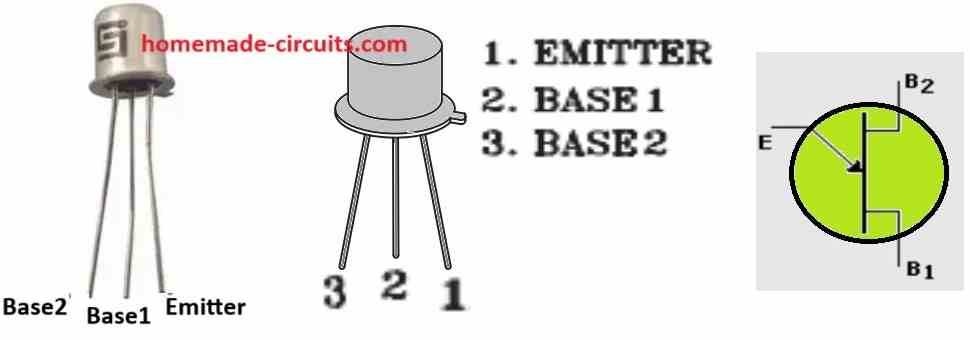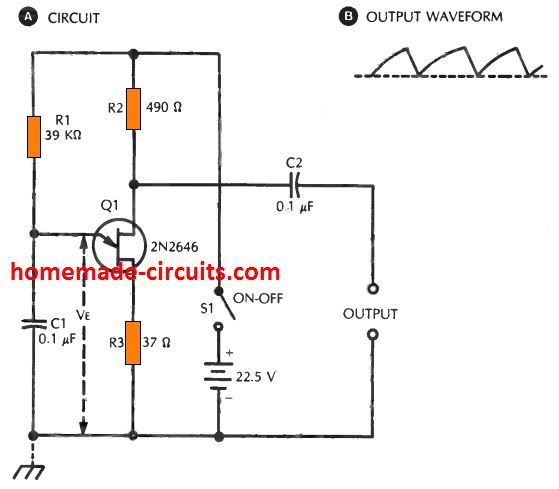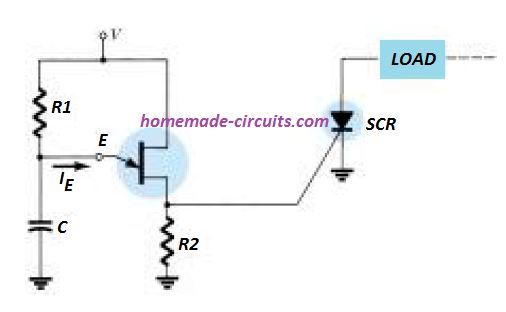The 2N2646 is a type of Unijunction Transistor (UJT), which is commonly used in various oscillator based electronic circuit application.
The following paragraphs provide the datasheet and the main specifications of the device:
Pin Configuration:
The following diagram shows the pinout configuration of the UJT 2N2646.

- Pin 1 (Emitter): This pin is typically connected to the positive power supply voltage (Vcc).
- Pin 2 (Base1): This is the control pin for the UJT. Its voltage determines the switching behavior of the device
- Pin 3 (Base2): This pin is usually connected to ground or with a biasing resistor, towards ground.
General Characteristics:
- Type: Unijunction Transistor (UJT)
- Material: Silicon
- Package: Typically TO-18 (although may vary, depending on manufacturer)
- Number of Pins: 3 (Emitter, Base 1, Base 2)
Electrical Specifications:
- Base Voltage (Vbb): 35V (maximum)
- Emitter Reverse Voltage (Vbe): 30V (maximum)
- Repetitive Peak Forward Current (If): 2A (maximum)
- Peak Emitter Current (IE): 1 µA (maximum)
- Valley Current (Iv): 6mA (typical)
- Power Dissipation (Pd): 300mW (maximum)
- Operating Temperature Range: 65°C to 125°C
Advantages and Disadvantages
- Advantages: This UJT is easy to configure with minimum numberof external components. It is low cost. And good for triggering applications and requires low trigger current.
- Disadvantages: The UJT may not be suitable for high-frequency applications, limited current handling capabilities.
Common Applications and Connections:
- Relaxation Oscillator

This is a popular application in which, the UJT generates a periodic output pulse train. Here's a basic setup:
- Connect Base 1 (Pin 1) to the power supply (Vcc).
- Connect a resistor (R1) between the Emitter (Pin 2) and the power supply.
- Connect a capacitor (C1) between the Emitter (Pin 2) and ground.
- Connect Base 2 (Pin 3) to ground.
The values of R1 and C1 determine the oscillation frequency. You can find online resources or circuit diagrams with specific component values for relaxation oscillators using the 2N2646.
- SCR Trigger Circuit:

In this application, the UJT acts as a trigger for a Silicon Controlled Rectifier (SCR). The workingexplanation is given as follows:
- The UJT acts as a voltage-controlled switch.
- By applying a voltage pulse to the Emitter (Pin 2), you can trigger the UJT, which in turn triggers the SCR.
The specific connections will involve additional components, for example like resistors and SCR itself. You must Refer to SCR trigger circuit diagrams for detailed configurations.
References: Datasheet